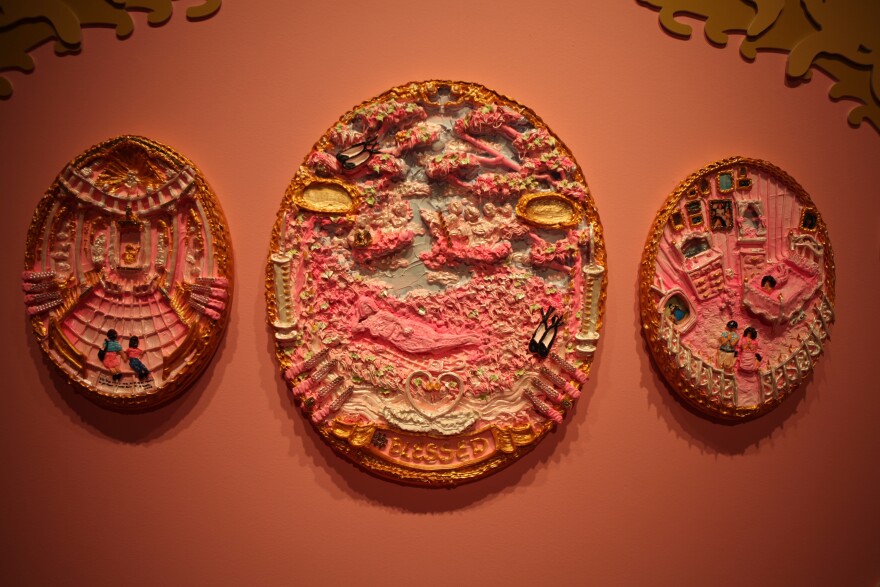When curator Emmanuel Ortega thinks of New Mexico State University's trove of Mexican religious artworks with their intricate paintings of sacred subjects, often on small pieces of tin, he doesn't think of them as folk art.
"I don't believe in those categories, I think they only create difference," he said.
The university's art museum in Las Cruces houses the country's largest collection of Mexican artworks known as retablos.
Now Ortega, who is the Assistant Professor in Art of the Spanish Americas at the University of Illinois at Chicago, has brought some of the collection back on display, and invited the creation of new artworks inspired by the old ones.

The exhibit, Contemporary, Ex-Voto: Devotion Beyond Medium, which opened at the end of September, focuses on the specific retablos known as ex-votos which often depict miracles. They were often commissioned as part of a prayer for help, or to give thanks for help given, and taken to shrines or places of pilgrimage. The identities of their creators is usually lost.
Ortega invited about a dozen artists to reflect on these works, and create new works of their own
"I wanted a group of Latinx artists," he said, "and I gave them three restrictions. I said, you have to think beyond medium, not just making ex-votos out of tin, but something else. You need to think about devotion, whatever that means. And you have to think about ideas of resilience."
Resilience, he said, is because ex-votos have their roots in Italian art of the 1600s or earlier, and they still exist today despite historically not being considered high art
During a visit before the exhibit opened, artist Xochi Solis was working on a collage installation covering two walls. She mixed paintings, magazines and family artifacts, with close-ups of the ex-votos.
"Praying hands, elbows, knees, that to me mimic landscape," she said. She seeks to commemorate the intention of the older artworks.
"Those that were making them were self taught artists, but they were artists," she said. "And they had a role in society. When they were being commissioned to make this it was a relationship between the person that wanted to tell a story to share maybe a moment of trauma, a moment of celebration, a moment of relief."
The rest of the exhibit is diverse and imaginative.

Yvette Mayorga has made a flamboyant pink chapel that looks like a cake or a Barbie house, with tiny votive images embedded within it. Others have created art around their own experiences of migration. The old and the new braid together around the eternal human experience of yearning for grace.
The exhibit “Contemporary Ex-Votos: Devotion Beyond Medium” is at NMSU until December 22.





